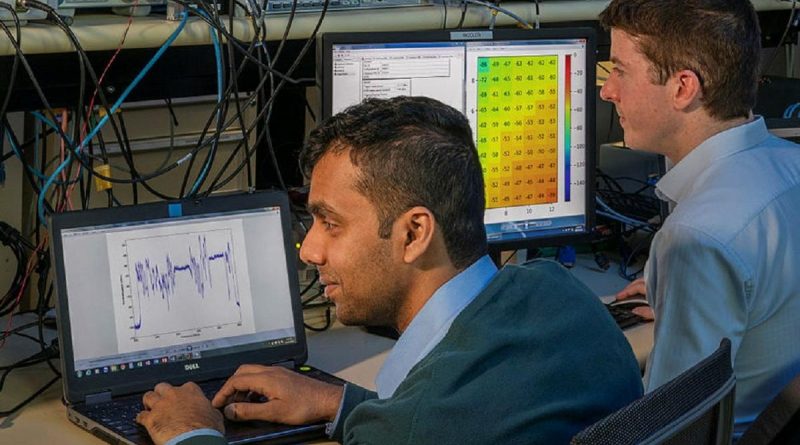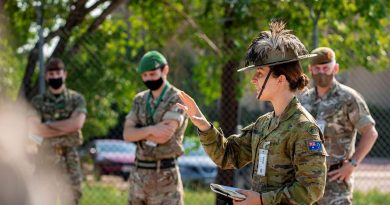New jamming tech proving successful

Defence Science and Technology Group (DSTG) is working with South Australian start-up, RFTEQ, to develop jammer technologies capable of defeating radio-controlled improvised explosive devices and other communication threats.
CAPTION: Defence Science and Techonology Group’s Bathiya Senanayake, left, and an RFTEQ team member testing the new Complex Adaptive Threat Jammer Technology system at DSTG Edinburgh, South Australia.
The partnership is already yielding promising results, with the development of the Complex Adaptive Threat Jammer Technology (CATJAT).
Integrating DSTG-designed and developed countermeasure techniques with RFTEQ’s cutting-edge digital signal processing algorithms, CATJAT is able to detect and identify advanced radio waveforms in real time, and then generate precise, targeted jamming responses to neutralise the threats.
Currently a vehicle-based system, CATJAT has been tested in the laboratory, and has had two successful over-the-air trials at Woomera in South Australia.
DSTG scientist and CATJAT project lead Rohit Naik said the testing demonstrated CATJAT’s performance was significantly better than traditional jamming techniques.
“It also demonstrates that the CATJAT system can function dynamically in real-world environments with the ability to deny advanced communication threats in real time,” Dr Naik said.
DSTG lead researcher and CATJAT technical adviser Bathiya Senanayake has been developing technology to counter improvised threats for the past six years and said CATJAT was a significant advancement on current technologies.
“It’s a generation ahead of current ADF kit in terms of algorithms and more powerful platforms,” Dr Senanayake said.
The advantages CATJAT offers over existing technology include real-time identification of threat signals, the ability to target the specific protocols of threat signals, dynamic threat response selection and resource management, and rapid response times because of a unique targeted approach to signal processing.
The project has been funded by the Next Generation Technologies Fund (NGTF) as part of the Counter Improvised Threats Grand Challenge.
“Through this project, we’ve successfully demonstrated an innovative technology that will directly enhance the protection of Defence and security personnel and equipment,” Dr Naik said.
CATJAT has now been extended with NGTF transitional funding to further develop the range of reconfigurable techniques and capabilities, and is currently under consideration by the Defence Innovation Hub to further develop the system as a potential Australian sovereign capability.
.
.

.
.





